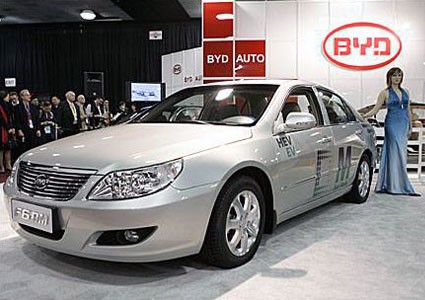Shenzhen-based electric carmaker BYD may have shifted its position on the type of fuel cell used in its products, as indicated by a recent government document on electric vehicles, the China Business News reported.
In the 72nd catalog of energy-saving and new-energy vehicles covered by government subsidies published by the Ministry of Industry and Information Technology (MIIT) on Aug. 14, BYD model "BYD6460STHEV" was included in the list.
According to the report, the BYD model, believed to be the company's Song model, is set to be sold in the market in the third quarter of the year.
The report said that based on the car's specs, it uses lithium nickel cobalt aluminum oxide (NCA) cells produced by BYD's battery unit in Huizhou. The company, which focuses on lithium iron phosphate (LFP) cells, therefore has successfully developed a type of ternary battery, the report added.
BYD has become China's leading company in terms of LFP technology, but since 2014, the sector has been shifting toward ternary batteries that have higher specific energy and longer calendar life, the paper said.
BDY's cell production is seen as a major factor behind its dominance in the new-energy car business in the country, as BYD is also the fourth-largest cell producer in the world, having a 6-percent market share in 2014.
On the other hand, electric carmaker Tesla, an NCA cell user, is establishing a factory in Nevada that is set to begin production in 2017. The factory is expected to reach full capacity of 50 gigawatt-hours per year by 2020, the report said.
The EV Sales Blog rankings showed that Japan's Matsushita is leading the lithium cell market with a 38-percent share; followed by AECS, a joint venture between Nissan and NEC; and LG Chem.
Despite managing to cut the size and weight of the LFP cells into half and pushing the energy density to 130 watt-hour per kilogram (wh/kg) in its latest Qin model, BYD is still out of the Ministry of Science and Technology's requirements that the energy density of electric car batteries should reach 200 wh/kg by the end of the year, the report noted.
The newspaper said that higher energy density makes ternary batteries more appealing in the sector.
Some companies that made LFP cells, like Tianjin Lishen Battery and China Aviation Lithium Battery, have reportedly begun producing ternary batteries.
A BYD executive said that the company would not rule out the possibility of using such cells in cars since it is already using ternary batteries in the handsets its manufactures under contract for other enterprises.



























